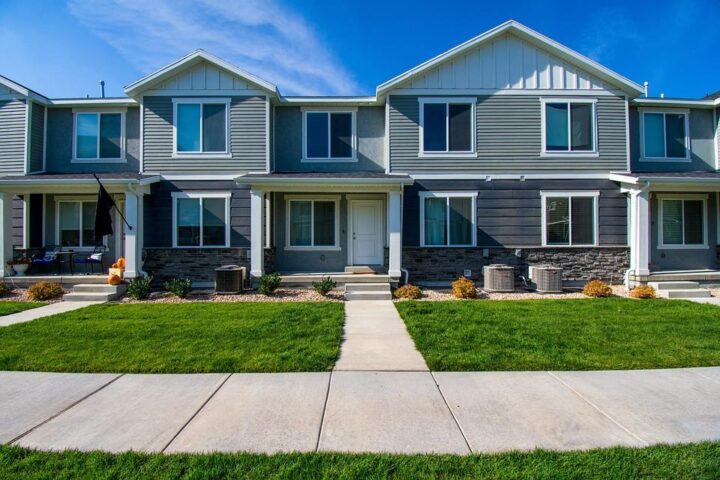Finding the Perfect Nest: A Family’s Guide to Choosing the Right Home
When you embark on the journey to choose the perfect family home, there is a lot that must be considered. Unlike choosing a home for a single person, a family home is not just about personal preferences—it’s about security, stability, and the memories you’ll build within its walls.
This is the place where your children will probably learn to walk, where birthdays and holidays will be celebrated, and where you’ll feel a sense of belonging for decades to come.
Many families dream of settling in a place that offers not just a comfortable home but also a strong sense of community, excellent schools, and job opportunities. For instance, South Carolina is known for its welcoming neighborhoods and beautiful natural surroundings. But even in a great location, finding the right home takes more than just picking a nice house.
So, here’s a guide to help you find a home that can offer comfort and peace for years to come.

1. Researching the Right Neighborhood for Your Family
Before diving into home listings, the first step is to determine which neighborhood best suits your family’s lifestyle and long-term needs. A house can be remodeled, upgraded, or expanded, but the location is permanent. Choosing the right area is just as crucial as selecting the perfect home.
South Carolina, for instance, offers many family-friendly communities with strong schools and an affordable cost of living, but not all neighborhoods are the same.
Some areas cater to those who prefer a suburban lifestyle with quiet streets and parks, while others offer a more urban experience with easy access to entertainment and job opportunities. For instance, Myrtle Beach is the best place to live in South Carolina for those who enjoy a vibrant lifestyle. However, if you prefer more peaceful surroundings, Summerville might be the ideal place.
Generally, when researching neighborhoods, consider factors like safety, school districts, commute times, and access to essential amenities like hospitals, grocery stores, and recreational spaces.
Spend time in the area during different parts of the day to get a sense of traffic patterns and overall atmosphere. Talk to locals if possible—there’s no better way to get an honest perspective on what it’s like to live there.
2. Defining Your Home Must-Haves and Deal Breakers
With so many options available, it’s easy to feel overwhelmed when searching for a home. One way to narrow down choices is to create a clear list of must-have features and deal-breakers. This ensures you remain focused on what truly matters rather than getting distracted by details that won’t have a lasting impact.
Think about what your family needs now and what it might need in the future. If you plan to grow your family, extra bedrooms and a spacious backyard might be must-haves. If you work from home, a dedicated office space should be a priority.
Just as important as the must-haves are the deal-breakers. A long commute, noisy surroundings, or an outdated home requiring expensive repairs may not be worth the compromise. While some things can be changed, such as paint color or minor renovations, others—like a poor layout or high property taxes—might make the home a bad fit.
3. Evaluating School Districts and Educational Opportunities
Even if your children are still too young for school, the quality of nearby schools is an important factor when choosing a family home. A strong school district not only provides better education opportunities but also contributes to higher property values and neighborhood desirability.
Visit the schools in person if possible. A school with dedicated teachers, strong community engagement, and varied programs can have a lasting impact on your child’s development.
If homeschooling is an option, check whether the home has adequate space to support that setup. Investing in a location with strong educational opportunities can provide long-term benefits both for your children’s future and your home’s value.
4. Budgeting Beyond the Mortgage: Hidden Costs of Homeownership
The listing price of a home is just the beginning of financial considerations. Many buyers focus solely on mortgage payments but overlook the additional costs that come with homeownership. Have you added property taxes, homeowners insurance, and maintenance expenses to your budget?
Older homes may require updates to plumbing, electrical systems, or roofing, while newer homes might come with homeowners association (HOA) fees. Utility bills also vary depending on the size and efficiency of the home. If you’re considering a fixer-upper, make sure you budget for renovations and unexpected repairs.
It’s vital to calculate all potential expenses before committing to a home. Speaking with a financial advisor or mortgage lender can provide clarity on affordability and ensure that you’re making a sustainable investment.
5. Understanding the Local Market and Timing Your Purchase
The housing market can be unpredictable, and timing your purchase wisely can make a big difference in what you pay and how competitive the process is. Real estate markets go through cycles, with periods of high demand driving up prices and times when buyers have more negotiating power. Understanding these trends in your target area can help you make a strategic move.
In a seller’s market, where demand is high and inventory is low, homes sell quickly, often above the asking price. Buyers in these situations may need to act fast and be prepared for bidding wars. In contrast, a buyer’s market offers more options, less competition, and often lower prices. If possible, purchasing during a slower season—like late fall or winter—may give you an advantage.
Mortgage rates also play a role in affordability. Keeping an eye on interest rate trends can help you lock in a lower monthly payment. Consulting a real estate agent who understands the local market can provide valuable insight into when to buy and how to make a competitive offer without overpaying.
6. Considering Commute Times and Daily Convenience
A beautiful home in an ideal neighborhood might lose its appeal if your daily commute is long and stressful. Before purchasing a home, consider how its location will affect your family’s daily routine. The convenience of getting to work, school, grocery stores, and healthcare facilities should all factor into your decision.
Long commutes can take a toll on work-life balance, leaving less time for family activities, hobbies, and relaxation. If public transportation is an option, check for nearby bus stops or train stations.
Test out the commute at different times of the day to see how traffic flows. What seems manageable on a weekend could be frustrating during rush hour. Finding a home that balances location, affordability, and convenience will contribute to a more stress-free lifestyle.
A Home That Grows With You
Choosing the right home is all about finding a place where your family can be comfortable and happy. A home isn’t just a structure—it’s where family traditions are built, where laughter fills the rooms, and where you create lasting memories.
By taking the time to plan, research, and work with trusted professionals, you’ll find a home that not only meets your needs today but continues to be the perfect nest for years to come.


